The forgotten widows of Ukraine and their fight to find lost husbands: “Every step of the official process seems not to work”
Overwhelmed with casualties, the system responsible for identifying Ukraine’s dead is failing and exacerbating the suffering of bereaved families. The country’s war widows are fed up.
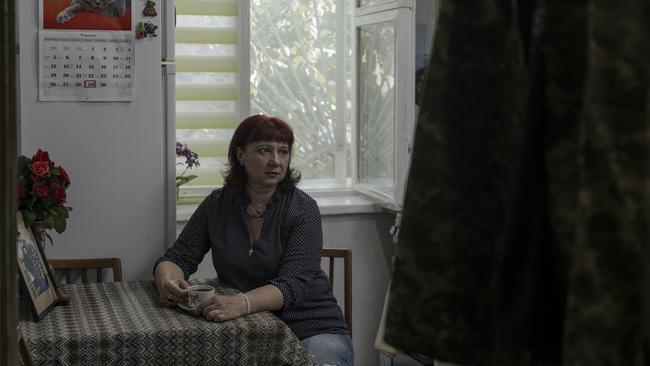
Three of the five wounded Ukrainian soldiers loaded into the back of an armoured personnel carrier for evacuation were dead before they ever reached a major hospital. Pavlo Makhno was one of them. Injured in both legs, his hip smashed by shrapnel and one foot severed during a heavy Russian bombardment of the soldiers’ position on the eastern front, the soldier from the 93rd Brigade died of shock and blood loss on the road to Kharkiv just a few hours after being wounded.
His comrades had managed to transfer him from the armoured vehicle into the care of medics a short distance from the fighting, and Pavlo had passed through at least two field hospitals where attempts were made to stabilise him. They were to no avail. His body was unloaded into a military morgue in the town of Lozova.
That was April 17, 2022. The face of the 54-year-old, who’d owned a small furniture business until the start of the Russian invasion, was unblemished. He should never have become an unknown soldier. Yet somehow, during the chaos of his evacuation, his identity documents had been mislaid and his name lost.
It took his wife, Oksana, more than a year to find him.
A psychologist working in Dnipro, Oksana had begun to worry about her husband that day when she could not reach him by phone. The Starlink satellite internet system used by units on the front ensures that most Ukrainian soldiers keep in regular phone or text contact with their families, even in the trenches. It is a mixed blessing, as any absence of communication can also cause alarm. A day later, her fears mounting, Oksana contacted Pavlo’s headquarters to check that he was OK. The army told her that he had disappeared, and declared Pavlo “missing in action”.
She posted a message on Facebook, along with her husband’s photo, hoping that the 93rd Brigade’s network of soldiers and their families may have more information. Hours later she was contacted by a Ukrainian officer who had been among the group of soldiers who helped load Pavlo into the back of the armoured vehicle. The officer assured her that Pavlo was last seen alive.
There the trail ended. The authorities devoted little effort to learning the lost soldier’s fate. Pavlo’s file was handed over to the police and SBU – the Security Service of Ukraine – who were already dealing with a mass of similar cases. It was left to his wife to find him.
The year that followed was paved by days in which Oksana had to trawl through pictures of dead soldiers on tablet screens at morgues, or call hospitals and police stations across the country, all while clinging to the hope that Pavlo was somehow alive and in an amnesiac state, lost within the Ukrainian medical system.
Systemic incompetence shadowed much of that journey. The first DNA test that the couple’s teenage daughter submitted at a police station was misplaced and sent late for analysis, then lost altogether within the system. At times, Oksana, 49, was reduced to standing outside the closed doors of police and SBU stations by officers who preferred to talk to her through the speaker on the doorbell rather than meet her face-to-face.
They had been married for 18 years when Pavlo disappeared. An articulate, measured woman, she speaks evenly and cries only briefly, although her anger is never far away. “The police can only have their life, sitting at work and drinking coffee, because of our soldiers in the field,” she says. “It’s not like I came to them asking for help with a lost phone.”
While her husband lay as just another unknown soldier in the morgue in Lozova, his family’s pain was protracted by shortfalls in the system responsible for the tracing and identification of dead Ukrainian soldiers – a system so overladen by the hideous toll of military casualties that all too often it extends and exacerbates the suffering of thousands of newly bereaved families, and delays the release of the financial support packages to which relatives of slain troops are eligible.
Oksana adds that recently a woman in a similar position, her husband also likely dead but his body missing, called her for advice. “I didn’t know what to tell her,” Oksana says. “Every step of the official process seems not to work.”
Eventually, she had a breakthrough. This northern spring, acting on Oksana’s behalf, the officer who had originally helped evacuate Pavlo from the front (and who by this time had himself been wounded and discharged from the army) joined her quest. He finally managed to locate Pavlo’s body in Lozova through his own private connections within the army.
The confirmation of her husband’s death and the whereabouts of his body afforded Oksana some kind of release. “During the search I had so many expectations, so much hope; I saw so many pictures of dead men that weren’t my husband,” she says. “If only someone had done their work properly in an hour and a half that it took me a year to achieve. It didn’t even need a DNA procedure, just a coherent system to match his file and photo with his body and family. In some ways, it was a relief just to end the process.”
She buried her husband on May 10 in the military cemetery of Krasnopilske in Dnipro, 13 months after he died of his wounds on the road to Kharkiv. “There weren’t many people at the funeral,” she tells me. “Just a couple of other soldiers. Most of his friends from his unit had been killed by then, too.”
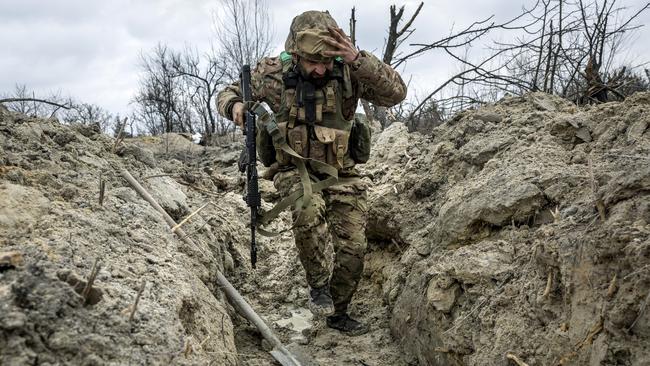
Three-volley salutes of gunfire crackleacross the Krasnopilske cemetery as the day’s funerals unfold. Situated on the west side of Dnipro, the regional capital of Dnipropetrovsk oblast in southeastern Ukraine, the cemetery has one of the largest concentrations of soldiers’ graves in the country. Though there is now scarcely a Ukrainian settlement, right down to the most inconsequential village, that does not have the graves of troops somewhere nearby, more than 2,000 soldiers are buried in Krasnopilske, Pavlo among them.
Looking across the gentle slope of the cemetery, the Ukrainian flags flying from the soldiers’ graves, lifted by a southeasterly breeze, are clustered so thickly in places as to ripple the horizon line into a shimmer of blue and yellow: a coloured glimpse of the war’s enormity.
More than 100 freshly dug and open graves yawn, waiting for a new influx of dead troops from the front. In other places, the brightness of bouquets and wreaths of flowers drop away to rows of bare brown crosses with the words, “Here lies an unidentified defender of Ukraine” written on a plaque.
“I have conducted around 50 or 60 funerals since the invasion began,” says one of the military chaplains working there, Father Vasyliy Kolodiy, after I watch him conclude the burial of a soldier. Then the priest qualifies his words. “Sometimes these have been funerals with 20 soldiers at once on the same day or, in bad times, when it’s 20, 20, 20 in a row over three days.”
Kyiv’s western allies remain staunch in their support of the Ukrainian army’s fight to repel the Russian invasion. Across western Europe, Russian casualty figures are speculated about wildly, sometimes joyfully. By contrast, though the sacrifice of Ukrainian troops is eulogised, the figures of the enormous losses suffered by its soldiers are carefully withheld by Ukraine’s authorities.
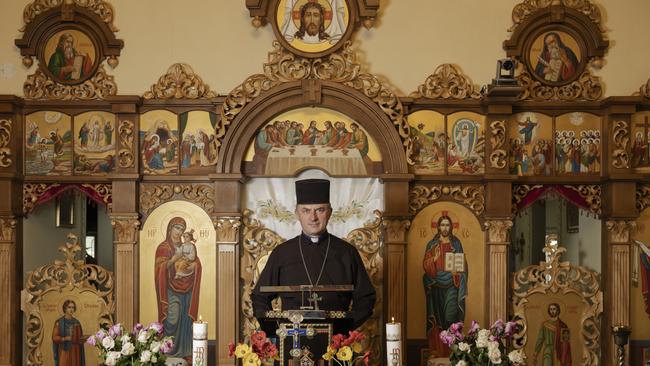
Last autumn General Mark Milley, chairman of America’s Joint Chiefs of Staff, said that each side in the conflict had likely incurred similar military casualties of more than 100,000. Thousands more soldiers have died since Milley’s remarks, which preceded the savage, attritional nine-month battle for Bakhmut and the start of Ukraine’s counteroffensive in June. Indeed, 18 months after the invasion started, bereavement affects most of Ukraine. A survey published recently by the Kyiv International Institute of Sociology found that 63 per cent of Ukrainians have a close relative or friend who has been slain in the war. On average, most said they knew of three close connections who have been killed.
When a soldier is killed, providing his body is recovered and easily identified by his unit, the process of returning it to the family can take just a matter of days. But amid the ultraviolence of modern weaponry and the massive scale of the war, Ukrainian forensic examiners say more than 10 per cent of their troops killed in action cannot be identified when their bodies are brought back from the battlefield.
The efforts to identify these waves of unknown soldiers is one of the Ukrainian war’s untold stories. It is not a story of glory or redemption. Instead, the effect that the identification process has on the thousands of families it involves often transfuses the brutality of the front directly into the minds of those already subsumed by grief. Some of these unknown soldiers, like Pavlo, are separated from their identity documents as their bodies pass back down the line in the confused aftermath of fighting. Others are simply too ruined and disassembled to recognise. Though new legislation aims to establish a national DNA database among the Ukrainian military, it has yet to be put into place. In the meantime, the system matching DNA tests with family requests to find missing soldiers is riven with problems.
“There is not usually a funeral for unidentified soldiers,” Father Kolodiy continues, looking towards a group of bare crosses nearby. “To be unidentified is the start of a long and often painful DNA process, which can take up to a year. If DNA later confirms their identity, then they are reburied and a funeral can take place, but not before.”
A warm and good-humoured man, Kolodiy, 56, conducts a special monthly service at his church in Dnipro where bereaved military family members can meet, pray and talk. It is at one such service a few days later that he introduces me to some of the widows that war leaves behind.
The stories these women tell over the next few days chart oceans of terrible grief, thwarted love and horror. All are weary. Some sound exhausted; most speak with a sense of having been let down by a system when they most needed it, sometimes to the point of abandonment. A few are angry, but mostly they are still so heavy with loss that if anger is there, it is masked with the softness of sorrow rather than revealed with the heat of fury.
Not one of these women rails at the war, at least not to me. But each one tells of an intimately dreadful experience – sometimes so brutal that it seemed a mockery of love and gentleness – that they had undergone while they tried to locate or identify their dead men, soldiers either lost in the colossus of the war, or who had their identities expunged by war munitions and war machines.
Their stories are not anomalous. Even those for whom the identification procedure was relatively smooth speak with deep fatigue of the bureaucracy involved in the processing of their husbands’ deaths.
The multilayered system requires most widows to collect as many as 13 separate sets of sequential paperwork from different military, police and civil offices, which then have to be submitted to the department of social security and the defence ministry for approval before families are entitled to a one-off payment of 15 million hryvnia ($600,000). This financial support package has to be divided between the parents, spouse and dependents of dead soldiers. Variable monthly pensions follow according to rank, length of service, family size and the ages of children.
The nature of the conflict, with its ballistic missiles, massed artillery and air strikes, the hurtling metal, churning blasts and scorching flame, ensure that some Ukrainian widows never receive anything of their husband to bury at all. The war robs them even of a grave.
Vitaliy Soldatova, a 35-year-old soldier in the 54th Brigade, was killed by a shell from a tank in March last year, as he fought a rearguard action in the eastern Ukrainian city of Volnovakha. His remains were never recovered. Two other soldiers witnessed Vitaliy’s death, and reported it to their commander, before they in turn were killed. Their fleeting witness testimony was nevertheless enough for the military to issue a legal edict known as an akt, specific to dead soldiers whose body is never found, confirming Vitaliy’s death and allowing for a death certificate to be issued – the key first step in the documentation process.
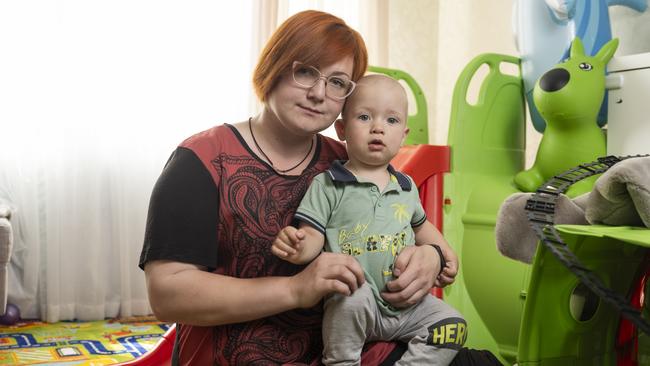
However, even though the akt was issued quickly, it took another seven months for Vitaliy’s widow, Svitlana, a 32-year-old mother with Type 1 diabetes, to receive the required paperwork necessary for financial support.
“I ended up pleading with the authorities for my documents, saying that I was a new widow, with diabetes and two small children, displaced from my home,” she tells me in Dnipro. “I was repeatedly confronted with an attitude of people just trying to get rid of me.”
Living in a strange city, without a grave to visit, she has recently planted a tree in her husband’s memory in Dnipro’s Rocket Park. Yet she still struggles with twin-track emotions, wondering if her husband is still somehow alive, and not knowing if she should feel guilty in accepting his death.
“I still watch all the prisoner of war exchanges in case Vitaliy is included in one,” she admits. “Without a body there are parallel thoughts in my mind. I understand he’s dead, but I hope he is not. I have planted the tree here to remember him, but I am also thinking, ‘How will he react on seeing it if he comes back?’”
For some, the trail of obliteration takes not just a love, a life and a home, but also the place where a couple had met. Depth of tragedy allows no dispensation; a single missing document can still delay the compensation process.
“I went from office to office to office to collect the right documents,” says Olha Savchenko, a 36-year-old widow whose husband, Dmytro, a member of a specialised anti-aircraft unit, was killed by a missile strike near Bakhmut last summer. “Each time I felt as if I was falling through the Earth.”
Olha had already been forced by fighting to leave the couple’s home when she lost her husband. There was not much left of him to bury at Krasnopilske. “All we got back of him was whatever was held inside his flak jacket,” she tells me.
Though a DNA test confirmed Dmytro’s identity, due to the sensitivity of his unit’s role the release of a key document confirming the sector on the front where he was killed was delayed. This in turn prevented the issue of a death certificate, a glitch that was enough to stall the payment of financial support.
“It took ages to resolve due to just that one absent detail,” Olha explains, tears flashing in her eyes.
The day before we meet, a Russian rocket attack in Kramatorsk destroyed the Ria pizzeria where she and Dmytro had started dating before they were married. “The war took my husband, our home, my job,” she says, “and now it has destroyed even the place we first went on a date.”
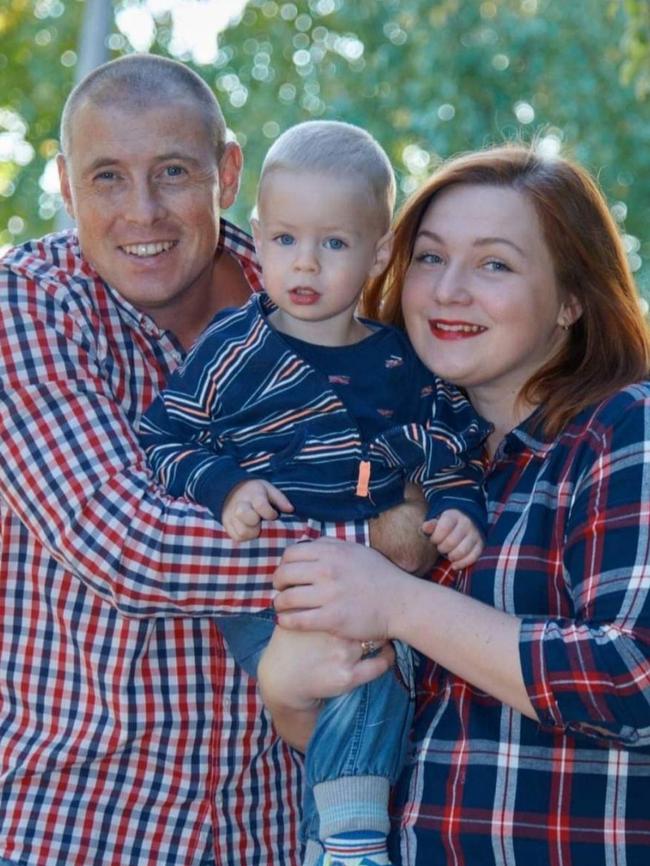
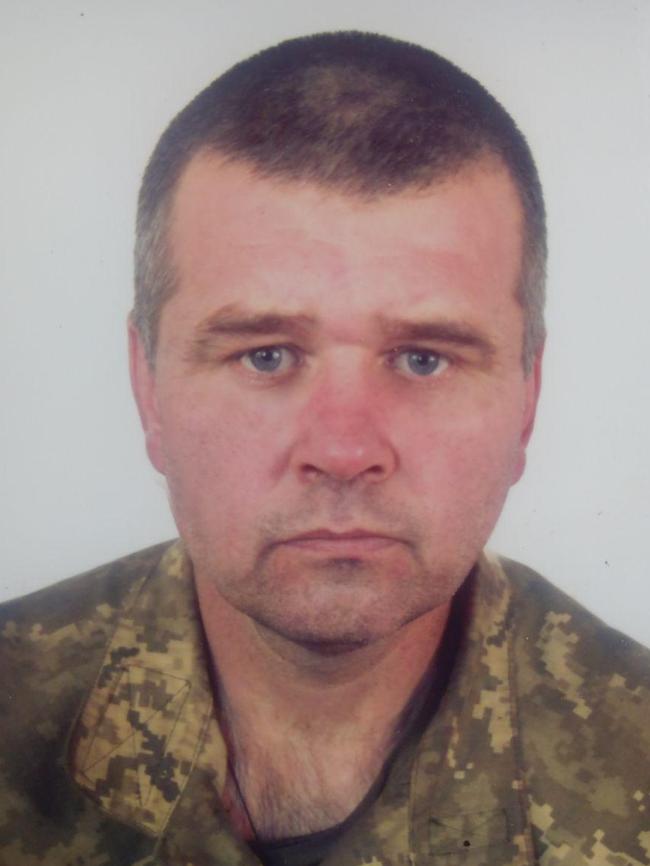
Though ultimately it is the sheer scale of the death toll that overloads the identification and documentation process, overall the system remains too decentralised, involving multiple different agencies and labyrinthine bureaucracy, to digest the volume of war dead efficiently, find the names of unknown soldiers and return their remains to their loved ones.
Moreover, the onus on finding missing soldiers falls largely on the families themselves, who have to initiate searches in morgue databases by first submitting requests to the Ukrainian police and the SBU, organisations that they regularly accuse of inefficiency and lassitude.
“In some of the departments involved, no one seems to care,” says Larysa Lykhohrud, the deputy head of an NGO in Dnipro that helps newly bereaved war widows negotiate the dark stages between receiving word of their husband’s death, identifying his body and undergoing the complexities of the documentation process. “There should be legislation passed to centralise the documentation process so that widows don’t have to exhaust themselves,” she adds. “It’s not like reinventing the bicycle. Other armies in the world have such systems. We should use similar models. Sure, the waris huge, but we have had enough time to get ready for it.”
Larysa’s own husband, Andriy, a lieutenant, was killed during the battle of Ilovaisk in August 2014. She struggled to identify his body among photographs of 86 soldiers in mortuaries in the city of Zaporizhzhia. “Can you imagine?” she says. “The bodies were totally unrecognisable. They had been lying out in the summer sun for a week before being recovered. They were like brown parchment mummies.”
Eventually, she found a photograph of an arm with a tattoo of Andriy’s blood type on it. The mortuary cross-matched the photograph to a body bag. Inside lay a corpse, ravaged by sun and violence, that wore Andriy’s boots.
“The whole experience was so ghastly,” she says, “that it left me with a resolve to help others who now face a similar situation. Not enough has changed since then.”
Walking through the yard outside Valeriy Vyun’s office at the Novokodatski forensic lab in Dnipro, I notice two women standing by a doorway. There are three refrigerator units with 150 unidentified soldiers around the corner of the building. The bodies of 15 more unknown soldiers had been brought in earlier this morning. As I pass through the yard, I see a member of the morgue staff hand one of the women a tablet. She gasps at the image on it and momentarily looks away, then gathers herself and turns her eyes to look at the picture once more.
Yet even if parts of the process linking families of unidentified soldiers with the bodies of their dead could have been better refined to ameliorate their suffering, there is no escaping the essence of the ghastliness at the heart of it all. It affects not just the bereaved, but those at the centre of efforts to identify the slain.
I step inside Vyun’s office and he closes the door. “Sometimes the sound of women weeping or screaming comes to us as we work. It is the hardest thing,” he explains.
Chief of the department of forensic criminal medicine, Vyun, 67, is a central figure in the process of identifying the dead sent to Dnipro from the front’s eastern sector. Before the Russian invasion he dealt with an average of about a dozen unidentified bodies a year, mostly of homeless men who’d died sleeping rough in winter. Now he receives the same number of dead soldiers daily, sometimes more.
“Since the invasion, we have only had one day here when we didn’t receive unidentified dead,” he notes, “and that was only because there wasn’t the transport to bring them in.”
His staff are often the first port of call for the army’s specialised “Cargo 200” teams that transport the dead back from the Donbas front. The Cargo 200 crews do their best to load each individual soldier into a body bag along with their documents and personal effects, but occasionally the destruction of the corpses and the haste of a process done in the immediacy of fighting mean that multiple pieces of different men arrive at the lab in the same body bag.
“Sometimes we get body parts from seven different soldiers in one body bag,” Vyun says.
Each piece of human remains must be meticulously cleaned, code numbered, photographed and swabbed for DNA. Often the cleaning process reveals important identification details: a tattoo; legacy scars from wounds or operations; or prosthetics from soldiers who were earlier injured, and went back to the front to fight and die with pinned bones or titanium patches.
Backlogs in the system matching DNA samples from unidentified soldiers with family members of the missing means that the process usually takes about two months.
In some cases, such as that of Oksana Makhno and her husband, Pavlo, when photographic evidence or a DNA sample is lost within the system, or if the police fail to check the family’s search request with mortuaries, the process takes a year or more.
Foreign forensic teams, including those from the International Committee of the Red Cross and the International Commission on Missing Persons, have begun supporting the Ukrainian identification process of war dead. Yet the capacity of the system remains deeply challenged, both in its structure and by the body-spewing speed of the war’s daily toll.
Some families refuse to accept DNA test results and feel more reassured with the physical recognition of part of a soldier’s body, however bleak the process of photographic identification may be.
“Sometimes the scientific explanation of a DNA match baffles people,” Vyun concedes. “They want something they can understand more easily. Often, in the case of wives, we find that it is the hands of their dead husbands they recognise. They know their men’s hands.”
Just for a moment, searching for solace among that clinical discourse on the practicalities of physical disassembly and the shell-shattered insults to humanity, my imagination is caught by these words, their suggestion of the intimacy of hands among couples, and of lasting imprint. The words inferred the reach out of tender recognition by hands when all else is lost, some sort of farewell between an unknown soldier and his widowed wife. But before the thought can establish itself, I recall the words of Tetyana Tertychna, a preschool teacher whom I had met two days earlier, and the momentary flight of fancy plunges.
Tetyana, 47, had been married to her husband Dmytro for 25 years. Despite a soft, singsong quality to her words, when we meet in Dnipro her grief is so palpable that it is a struggle to keep the interview going.
Dmytro kissed her goodbye when she went to work on February 24 last year, the day the Russian invasion began. He was an IT worker in a tax office but had military experience. By the time Tetyana got home that day, he had signed up with the 93rd Brigade and gone straight to join his unit. Though they kept in regular contact through texts and phone calls, Tetyana never saw him again.
On October 5 last year, he messaged her from Bakhmut to say he was OK. Hours later Dmytro was badly wounded by shellfire in a trench. A surviving soldier recalled that he had fallen to the ground and called out in pain, “Don’t leave me here. Get me home to Tetyana.” The trench was then obliterated by Russian fire. Dmytro’s body, along with two other soldiers, was torn apart. Later, the body parts of the three soldiers were gathered in two body bags. Tetyana was called to visit another forensic department in Dnipro, at the city’s Mechnikov military hospital.
“The lady there said, ‘It’s a mess. You won’t recognise him. We’ve got two bags with parts of three people inside. You need to do a DNA test,’” Tetyana recalled. “I insisted on seeing pictures. I recognised his hand. It was so awful that I don’t think anyone should be allowed to see those photographs, even if they demand to.”
The lab took a DNA swab from the couple’s adult son. It took ten weeks to get a result. Tetyana buried Dmytro on January 6 this year, three months after he was killed.
“I still call him every day,” she said suddenly. “At first his phone sounded like it would ring. It’s since been cut off. But I still call. Maybe he isn’t dead; maybe he is in a prison camp missing his hand. Maybe the DNA match was wrong.”
In the echo of her words, more than the immensity of her bereavement, lay a greater cruelty, one shared by every one of the widows whom I met who had experienced the identification process. The horrors to which they are exposed in trying to recover their men – the impact of photographs so terrible that “mutilation” is too mild a description to accurately convey what explosives can do to a body; the protracted, graceless indignity of the documentation process – all combined to visit upon them the very thing that their men had died trying to shield them from: the savagery of war.
With that in mind, it is hard to imagine how Valeriy Vyun can bear each day’s work, with its consistencies of abomination and the unremitting enormity of toll.
Official protocols restrict him from revealing the number of dead soldiers he has examined since the start of the invasion, but his words leave little to the imagination. “It is a colossal experience,” he says. “We are trying to adjust our procedures to the new reality. The main problem is that of capacity and the numbers of dead involved. We just don’t have enough trained human resources, and not enough labs.”
His personal defence lines against the horror appear based in a sense of professionalism. At one point, almost with pride, Vyun cites the resolution of the case of a Ukrainian sniper who was executed by Russians after his capture. The sniper’s body, lacking identity documents and his face obliterated, was recovered with 20 bullet wounds to his skull. Yet despite two DNA tests that matched family members, the sniper’s family remained unconvinced that the body was that of their man, until Vyun showed them X-ray images of the soldier’s teeth, which matched those on his pre-war dental records.
It is only as our conversation nears its conclusion, in a training room above the lab where the shelves are stacked with skulls and where pistols, knives and guns hang from the walls, that emotion strides unannounced into the room.
A 36-year-old forensic expert working there, Vitaliy Levchenko, is the first to introduce it. “I recognise that I am trying to reunite dead soldiers, men who are still loved, with those who love them,” he begins carefully. “It is very painful, extremely sad work. I go through a dead soldier’s things. I find his family photographs, letters from his wife and messages from his children saying, ‘My daddy is a hero.’”
For a moment there is silence. Then Vyun, who had held eye contact with me whenever he’d previously spoken, turns away and looks towards the window. “I am not really so sure if I am doing good work,” he says. “Work which so often brings such sadness to so many people. I wonder sometimes if it would be better, rather than confirming the death of their soldier, somehow to leave people with some hope that their man is still out there somewhere, missing but alive. Only God can decide.” b

To join the conversation, please log in. Don't have an account? Register
Join the conversation, you are commenting as Logout